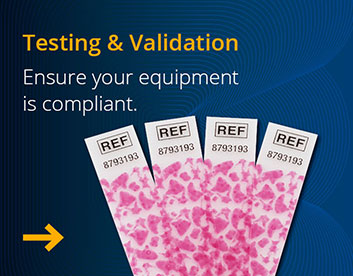The Eschmann Guide to Washer Disinfectors
Many practices are unsure whether a washer disinfector is right for their staff and their business. Below is all the information you need to help you
understand washer disinfectors, how they work and how they may increase efficiency in your workplace.
Washer disinfectors provide a reproducible, automated and validated process for cleaning and disinfecting reusable instruments prior to sterilisation in an autoclave. Implementing a washer disinfector, instead of manually washing instruments, means the cleaning and disinfection process is traceable and you have evidence that infection control protocols have been followed meticulously.
In dental practices in England and Wales, use of a washer disinfector helps you to demonstrate best practice as per guidelines (HTM 01-05). In Scotland, they are mandatory as per their local guidance (SHTM 01-05).
In addition, the risk of needle-stick injuries is significantly reduced compared to manual cleaning. Hands-free instrument trays are available to further minimise this risk.
To learn more about specific models and view our full range of washer disinfectors, click here.
The quality of manual cleaning will vary significantly depending on the time spent washing, the temperature of the water used and the care taken by the individual member of staff. A washer disinfector removes this ambiguity for complete confidence that instruments are ready for sterilisation. It automates and validates the pre-sterilisation instrument cleaning and disinfection stages for a more precise process.
A washer disinfector also helps to reduce labour time, freeing up staff time for other tasks. It also provides a safer cleaning solution for staff. The risk of needle-stick injuries is lower when using a washer disinfector than when manually washing instruments.
To learn more about specific models and view our full range of washer disinfectors, click here.
HTM01-05 - Decontamination in primary care dental practices
SDCEP - The Scottish Dental Clinical Effectiveness Programme
Article: Is a washer disinfector really worth it?
Article: What is WRAS and why is it important to your veterinary practice?
Article: What is WRAS and why is it important to your dental practice?
Article: What does it mean to be compliant in dentistry
Eschmann Decontamination Guidance Poster - Free download
Got a question or need help? Eschmann engineers are highly trained and experienced in ensuring the safety and efficiency of our equipment – Contact us for more information.









